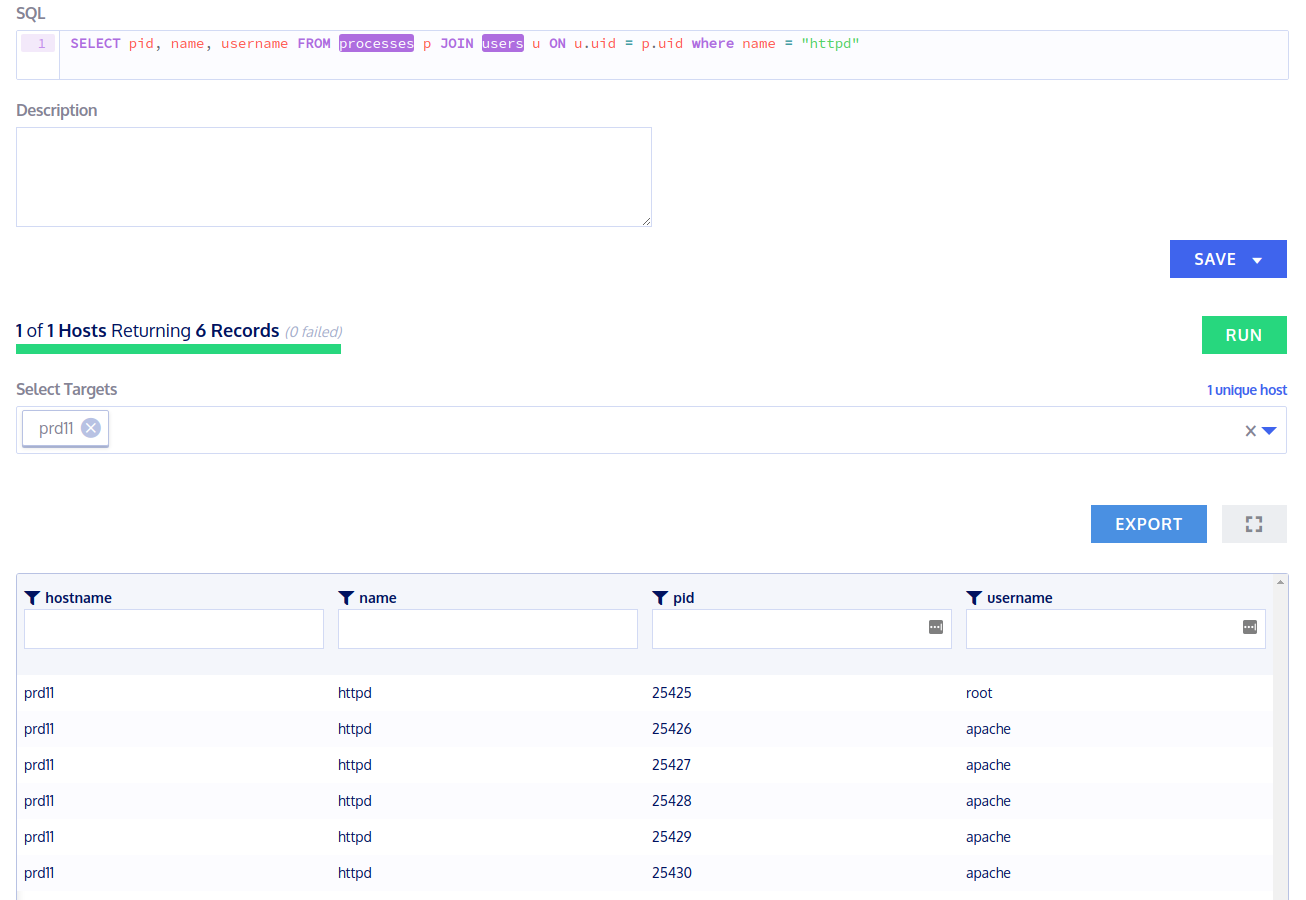
Note that this option should be used with caution and not be ticked if not needed-otherwise errors in the query might go unnoticed.
#Osquery join nslookup mac os#
Osquery is available on Mac OS X, Windows, and on many popular Linux distributions. It structures the operating system into a relational database that can be queried with SQL. In such cases, it might be desired to simply suppress them. Osquery is a system monitoring solution developed by Facebook that was open sourced in 2014. However, occasionally osquery can also produce warning messages that will cause the entire flow to fail. By mixing that with capabilities of SQL we get a really powerful. All that data is well-structured and described by the associated schema. By writing SQL queries one can list processes, devices, network connections, users or browse directory structure. due to syntax errors in the specified query). osquery is a utility created by Facebook that exposes system information through an SQL API. Ignore stderr errors īy default, GRR uses stderr output produced by osquery to determine whether the execution was successful or not (e.g. ones that search through the file system) where it might make sense to increase it. However, it is possible to write more sophisticated queries (e.g. Query packs utilize osqueryd’s existing query scheduler. Network security monitoring has had this concept for ages (e.g., Emerging Threats), and now we’re bringing it to a free, performant host instrumentation platform. Usually, queries should return immediately and the default timeout should be more than enough. Query packs help you group queries by function or problem domain into files that are easy to download, distribute, and update. The timeout field can be used to specify a time after which the query is killed if it is not able to produce any results. Refer to the osquery schema documentation to discover what tables and columns are available. If a process starts and terminates in between two queries, we will not find it in the “processes” table results.SELECT cmdline, total_size FROM osquery_info JOIN processes USING ( pid ) Returned data gives information about the state at the moment of processing the query. It is important to realize capabilities and limitations of Osquery when dealing with relatively short-duration effect.

For each process, it is worth to check the account it is running under and what is its parent process.

Processes running from AppData warrant a closer look, although these can be legitimate. A classic example is execution of system executables running from a folder other than System32 or SysWOW64. Then, look for names of processes running from unusual locations.

First clues to look for in the output are unusual arguments of command interpreter programs, such as cmd, powershell, python, cscript. It also demonstrates typical Osquery usage in combining data from multiple tables. The query listed below represents a general starting point that can be adjusted according to the type of suspicious activity we are currently hunting for. From basic information like executable path, command line arguments and PID to details such as usage of CPU time, memory usage and disk IO amount. One of the most frequently used Osquery tables, “processes” offers a lot of information about currently running processes. You can read more about Osquery in our short blog post. Queries from this blog need to be run with administrator privileges, otherwise their results can be incomplete. We will show Osquery queries helpful in identifying processes with suspicious network activity, which can serve the attackers for easy backdoor access to the device. For this purpose, attackers often launch malicious processes, hunting for which is the topic of this part of our blog series. With osquery, SQL tables represent abstract concepts such as running processes, loaded kernel modules, open network connections, browser plugins, hardware events, or file hashes. For this purpose, attackers often launch malicious processes, hunting for which is the topic of this part of our blog series. After gaining initial access to a device, the attackers try to establish command and control (C&C, C2) over the device with the aim to use it in following stages of the attack. osquery exposes an entire operating system as a high-performance relational database, which allows you to write SQL queries to explore detailed operating system data. After gaining initial access to a device, the attackers try to establish command and control (C&C, C2) over the device with the aim to use it in following stages of the attack.


 0 kommentar(er)
0 kommentar(er)
